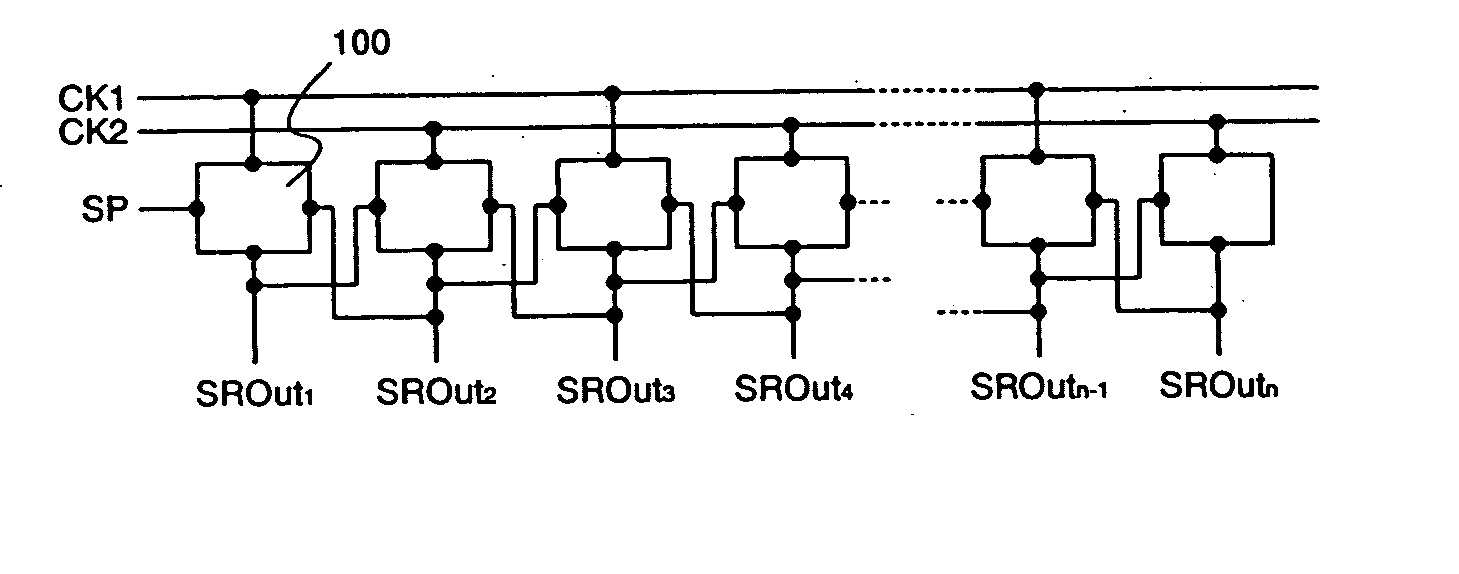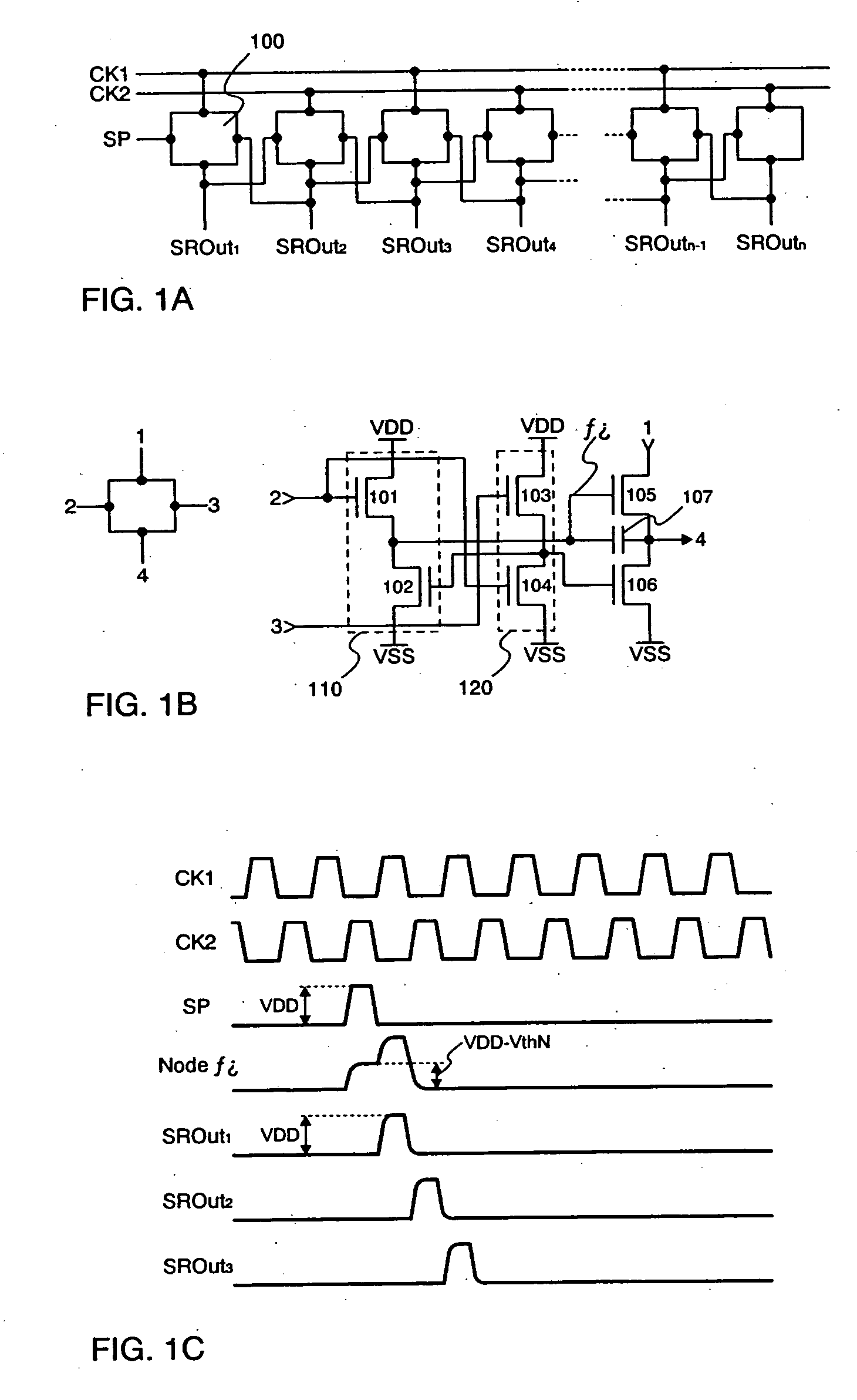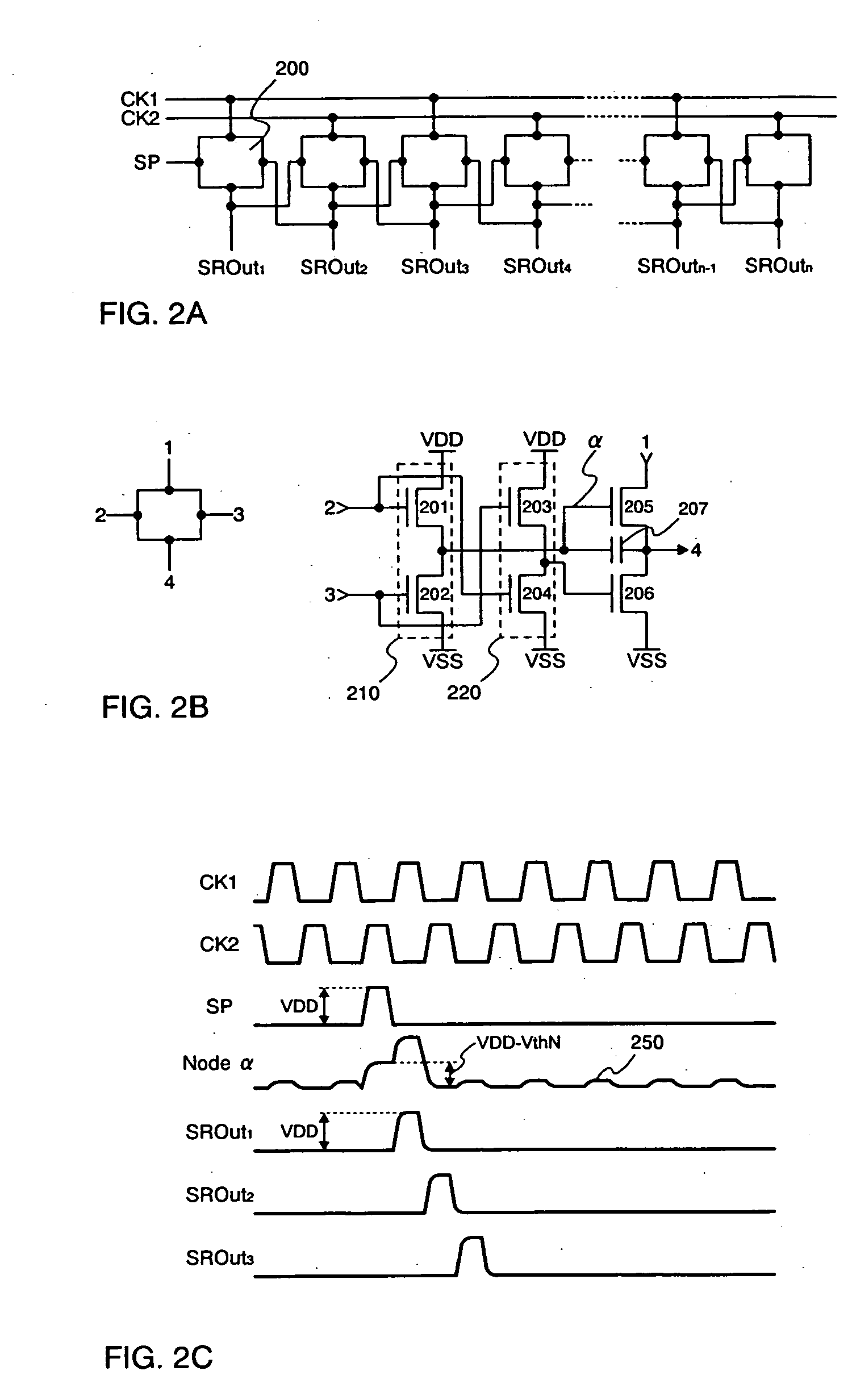Pulse output circuit, shift register and electronic equipment
a shift register and output circuit technology, applied in the direction of pulse technique, generating/distributing signals, instruments, etc., can solve the problems of difficult to reduce production cost, increase the number of steps, and increase the probability of malfunction of tft 205
- Summary
- Abstract
- Description
- Claims
- Application Information
AI Technical Summary
Benefits of technology
Problems solved by technology
Method used
Image
Examples
embodiment 1
[0176] FIGS. 3A and 3B show an example of the shift register described in the embodiment mode, which is additionally provided with a scanning direction switch function. In FIG. 3A, input terminals of scanning direction switch signal LR and of scanning direction switch back signal L / Rb are added to the shift register shown in FIG. 1A.
[0177] FIG. 3B shows a configuration of one stage of a pulse output circuit 300 in FIG. 3A. A main body of the pulse output circuit has the same configuration as that of FIG. 1B shown in the embodiment mode, while a scanning direction switch circuit 330 is additionally provided between the input signal terminals 2 and 3 and the main body of the pulse output circuit. The scanning direction switch circuit 330 includes TFTs 311 to 314.
[0178] As shown in FIG. 3B, gate electrodes of the TFTs 301 and 304 are connected to the input terminal 2 via the TFT 311 and to the input terminal 3 via the TFT 312. A gate electrode of the TFT 303 is connected to the input t...
embodiment 2
[0184] Explanation will be made on an example of the shift register described in the embodiment mode, which is additionally provided with an initialization signal (INI) as shown in FIG. 4A.
[0185] As shown in FIG. 4B, an initialization signal (INI) is inputted to a gate electrode of a TFT 411 added herein. When the TFT 411 is turned ON, a potential of a gate electrode of a TFT 406 is raised and the TFT 406 is turned ON, and thus, a potential of an output node is fixed at VSS.
[0186] Potentials of the output nodes can be fixed as VSS at all the stages by performing such initialization before the circuit starts to output a sampling pulse, that is, just after the power source is turned on, or during a fly-back period 460 provided in a part of a line period 450 as shown in FIG. 4C. In the case of employing a dynamic circuit as shown in the invention (circuit in which at least one node is in a floating state while operating), such initialization of the node or the like is effective for rea...
embodiment 3
[0187] Focused here are states of the TFTs 101, 102, 105, and 106 during a period in which the pulse output circuit described in the embodiment mode operates (see FIG. 6A).
[0188] FIG. 6B shows a state of each node when a pulse is outputted from the (k-1)th stage of the pulse output circuit and subsequently, a pulse is outputted from the kth stage of the pulse output circuit. Focused here is a period in which a bootstrap operation is conducted in accordance with a rising potential of an output node (SROutk) during a period enclosed by a dotted line frame 601, namely at the kth stage.
[0189] As explained in the embodiment mode, the TFT 101 is turned ON and the potential of the node .alpha. is raised to (VDD-VthN) when a pulse at the preceding stage (the (k-1)th stage here) is outputted and inputted to the input terminal 2 at the kth stage (see FIG. 6C). In such a state, the voltage between the gate and source of the TFT 101 becomes lower than the threshold voltage, thereby turning OFF ...
PUM
| Property | Measurement | Unit |
|---|---|---|
| conductivity | aaaaa | aaaaa |
| electrically | aaaaa | aaaaa |
| capacitance | aaaaa | aaaaa |
Abstract
Description
Claims
Application Information
 Login to View More
Login to View More - R&D
- Intellectual Property
- Life Sciences
- Materials
- Tech Scout
- Unparalleled Data Quality
- Higher Quality Content
- 60% Fewer Hallucinations
Browse by: Latest US Patents, China's latest patents, Technical Efficacy Thesaurus, Application Domain, Technology Topic, Popular Technical Reports.
© 2025 PatSnap. All rights reserved.Legal|Privacy policy|Modern Slavery Act Transparency Statement|Sitemap|About US| Contact US: help@patsnap.com



